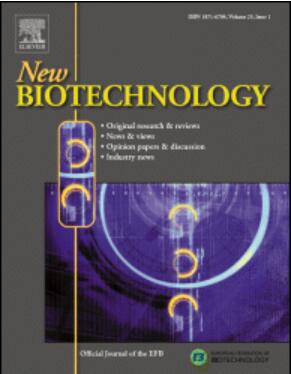Increasing the sustainability of photoautotrophic microalgae production by minimising freshwater requirements
IF 4.5
2区 生物学
Q1 BIOCHEMICAL RESEARCH METHODS
引用次数: 0
Abstract
There are now several companies that are producing microalgae such as Arthrospira platensis, Chlorella vulgaris, and Dunaliella salina, among others. They are cultivated mainly in large-scale raceway and tubular photobioreactors. Microalgae production represents a sustainable alternative to conventional biomass production. Microalgae can be used to manufacture agricultural products, animal feed, food and other commercial products. The water requirements for cultivating microalgae are significant, exceeding 1 m3·kg−1. This value varies depending on the production strategy. One of the main reasons for water loss is evaporation, which is influenced by the photobioreactor location, the season, and the operating conditions. Efforts are being made to reduce water requirements and make microalgae production economically viable and more environmentally friendly. Several strategies are being investigated for reducing freshwater use in microalgae cultivation; these include reusing the culture medium and producing microalgae using seawater or wastewater. Such strategies not only reduce water consumption, but also reduce nutrient consumption and costs while increasing sustainability.
通过尽量减少淡水需求来提高光自养微藻生产的可持续性。
现在有几家公司正在生产微藻,如Arthrospira platensis、Chlorella vulgaris、Dunaliella salina等。它们主要在大型回旋式和管状光生物反应器中种植。微藻生产是传统生物质生产的可持续替代品。微藻可用于生产农产品、动物饲料、食品和其他商业产品。培养微藻的需水量很大,超过1 m3·kg-1。该值因生产策略而异。水分流失的主要原因之一是蒸发,蒸发受光生物反应器位置、季节和操作条件的影响。目前正在努力减少对水的需求,使微藻生产在经济上可行,对环境更友好。正在研究减少微藻养殖中淡水使用的若干战略;这些措施包括重复利用培养基和利用海水或废水生产微藻。这些策略不仅减少了水的消耗,还减少了养分的消耗和成本,同时提高了可持续性。
本文章由计算机程序翻译,如有差异,请以英文原文为准。
求助全文
约1分钟内获得全文
求助全文
来源期刊

New biotechnology
生物-生化研究方法
CiteScore
11.40
自引率
1.90%
发文量
77
审稿时长
1 months
期刊介绍:
New Biotechnology is the official journal of the European Federation of Biotechnology (EFB) and is published bimonthly. It covers both the science of biotechnology and its surrounding political, business and financial milieu. The journal publishes peer-reviewed basic research papers, authoritative reviews, feature articles and opinions in all areas of biotechnology. It reflects the full diversity of current biotechnology science, particularly those advances in research and practice that open opportunities for exploitation of knowledge, commercially or otherwise, together with news, discussion and comment on broader issues of general interest and concern. The outlook is fully international.
The scope of the journal includes the research, industrial and commercial aspects of biotechnology, in areas such as: Healthcare and Pharmaceuticals; Food and Agriculture; Biofuels; Genetic Engineering and Molecular Biology; Genomics and Synthetic Biology; Nanotechnology; Environment and Biodiversity; Biocatalysis; Bioremediation; Process engineering.
 求助内容:
求助内容: 应助结果提醒方式:
应助结果提醒方式:


